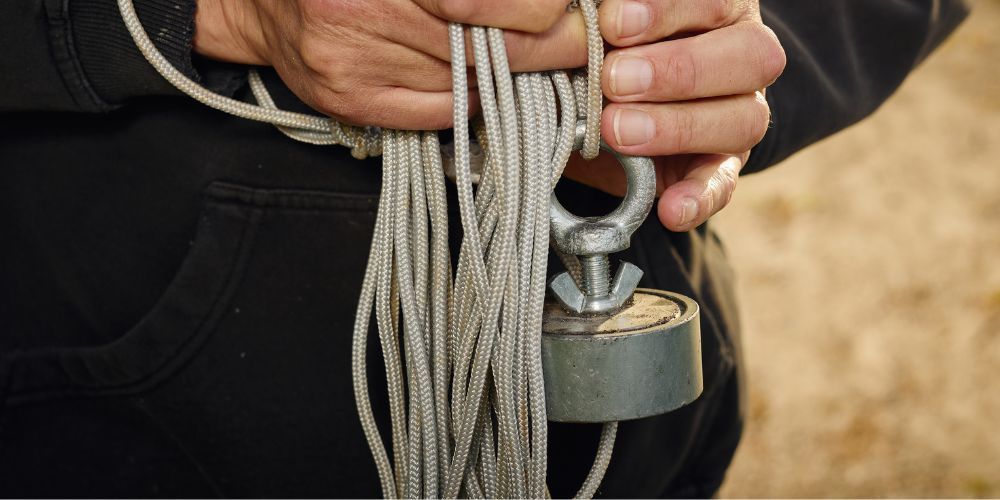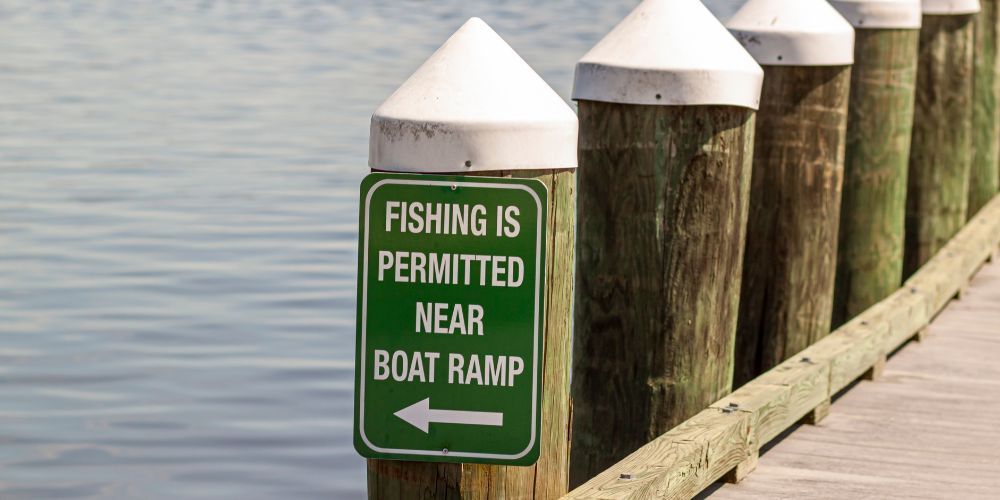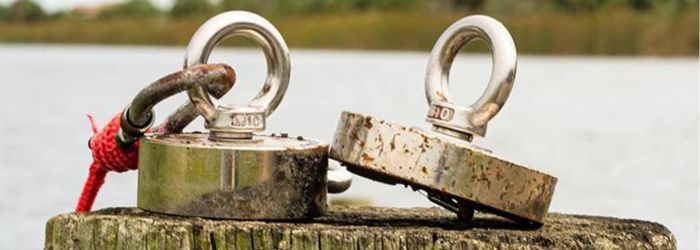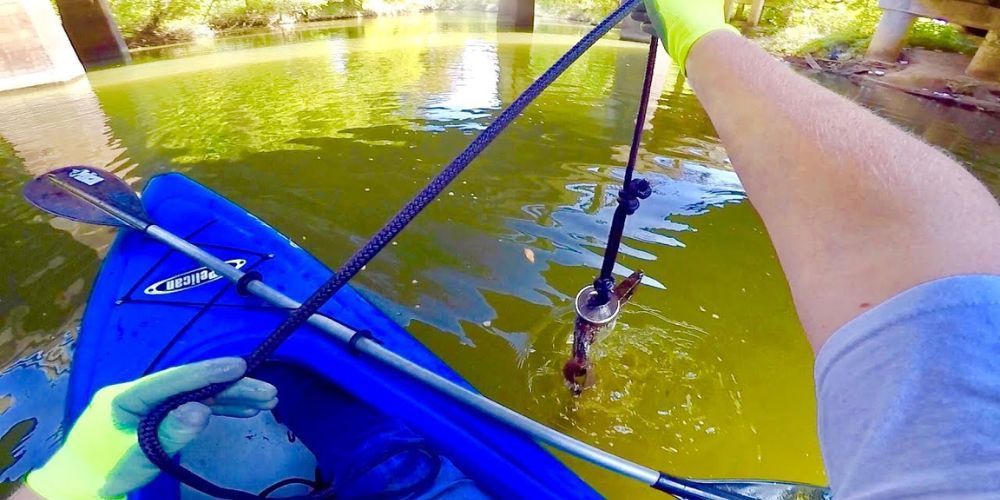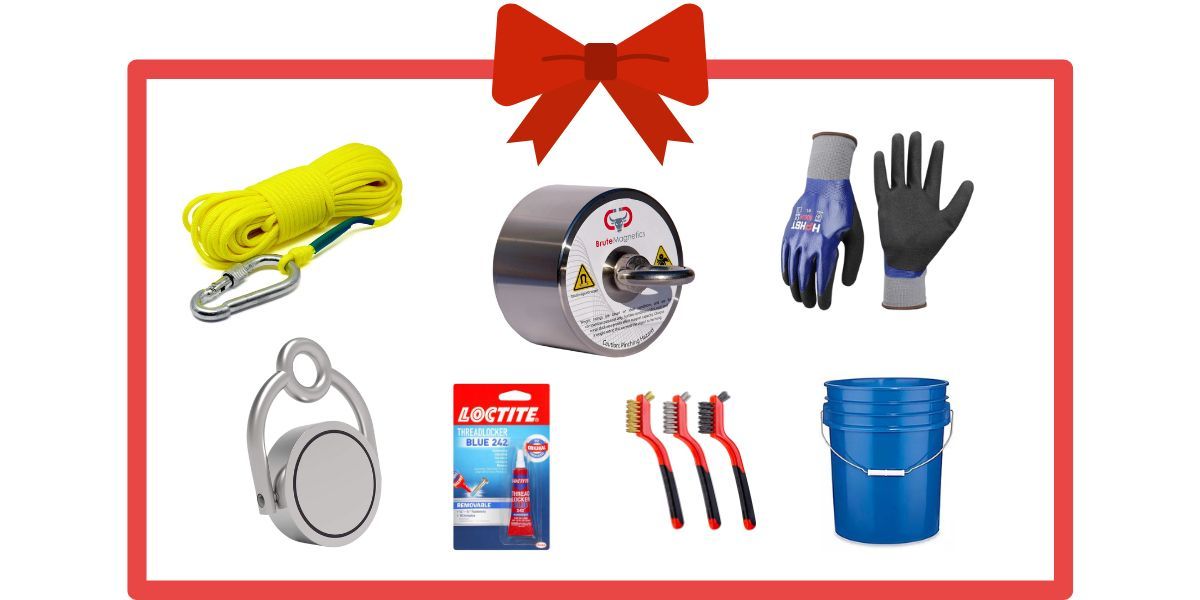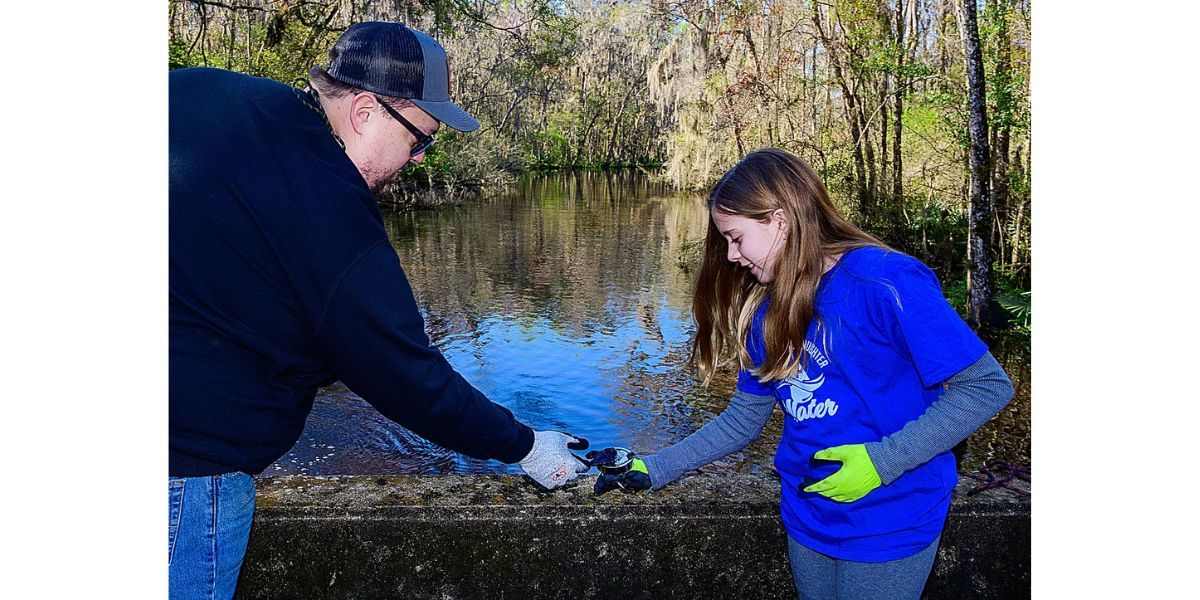The History of Magnet Fishing: Discover the Origins and Evolution
Magnet fishing, a pastime that draws thrill-seekers to riversides with powerful magnets, has deeper roots than many realize. This hobby connects us to ancient civilizations where magnetic forces first captivated human curiosity. Imagine early Greeks scrutinizing lodestones or Chinese scientists marveling at naturally magnetized minerals—these were primitive steps that set the stage for understanding magnetic fields.
Fast forward to today, and enthusiasts across Europe and the United States find joy pulling metallic treasures from water bodies, using tools far more advanced yet fundamentally similar in principle. From ancient discoveries to weekend escapades along tranquil canals, uncover how this blend of science and recreation evolved over centuries.
Magnet fishing is thought to have originated with boaters using magnets to retrieve fallen keys and other small metal objects from the water. Over time, it has evolved into a popular activity where enthusiasts use strong neodymium magnets to search for and recover ferromagnetic objects from outdoor bodies of water, uncovering items that may range from discarded bicycles to historic artifacts.
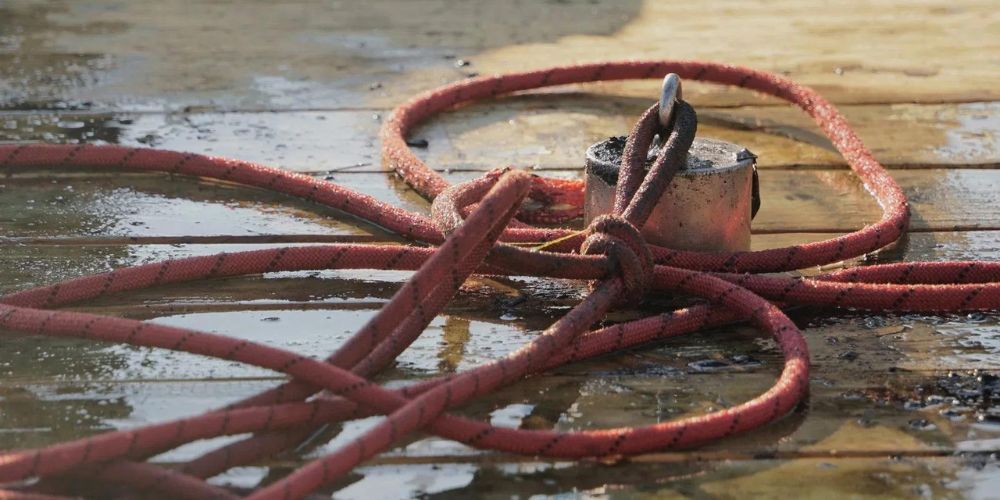
The Ancient Beginnings of Magnet Fishing
The story of magnet fishing dates back to the time of ancient Greeks and Chinese civilizations. These civilizations were among the first to explore and experiment with lodestones, naturally occurring magnetized minerals, awe-inspired by the natural phenomenon of lodestones attracting iron. These early civilizations found themselves exploring the mysteries of magnetism, laying the groundwork for future applications.
Expanding on this idea, the ancient Greeks and Chinese recognized that this unique property could be harnessed for navigation purposes, a concept quite profound for its time. It's no wonder that we still refer to one's guiding principles as a "magnetic north." At that point in history, however, the idea of using magnets for retrieving objects from bodies of water was yet to be realized.
Early experiments with lodestones and magnetism led these ancient societies to lay the fundamental groundwork for understanding magnetic fields. The concept flourished over time, leading to notable advancements in various aspects. However, it wasn't until much later that this knowledge was applied practically in what we now call "magnet fishing."
These early insights into magnetism and its potential uses marked the beginning of a journey that would eventually lead to an innovative activity like magnet fishing.
Stay tuned as we embark on a captivating journey through history, uncovering the evolution of magnet fishing from its humble origins to becoming a popular modern-day activity.
Embarking on this historical expedition illuminates how magnet fishing has evolved into an engaging pastime deeply rooted in centuries-old curiosity. By tracing its path through time, we gain valuable insights into its contemporary resurgence in Europe.
The Revival of Magnet Fishing in Europe
In the late 20th and early 21st centuries, something interesting started happening across Europe. People were drawn to a new kind of outdoor pastime that combined adventure, history, and the thrill of discovery—the revival of magnet fishing. Countries like England, France, and Germany became hotspots for this activity, attracting hobbyists who were keen to explore something different from the usual outdoor pursuits.
What makes this revival so fascinating is the sense of exploration it offers. Unlike traditional outdoor activities, magnet fishing taps into the curiosity of its participants by allowing them to uncover hidden artifacts and treasures from the depths of rivers, lakes, and canals. Enthusiasts armed themselves with powerful neodymium magnets attached to durable ropes and ventured out in search of unique finds.
Magnet Fishing Communities
The growth of online communities and forums also played a crucial role in fueling the resurgence of magnet fishing. These platforms served as gathering places where magnet fishermen could share their discoveries, exchange techniques, and offer safety tips. This communal aspect helped to foster a sense of camaraderie among enthusiasts and contributed to the increasing popularity of magnet fishing as more people were drawn in by the allure of this unconventional hobby.
For instance, imagine a group of friends eagerly planning their next magnet fishing trip. They excitedly discuss their previous discoveries - perhaps an old rusted bicycle or a historic coin - while exchanging recommendations for prime locations for their upcoming adventure. This sense of community and shared enthusiasm has been pivotal in sustaining the resurgence of magnet fishing across Europe.
Additionally, as social media platforms continued to gain prominence, hobbyists began using these channels to showcase their remarkable finds, further igniting interest in magnet fishing among wider audiences. Pictures and videos capturing the retrieval of intriguing items such as antique weaponry or vintage relics drew in curious onlookers and aspiring magnet fishers, contributing to the activity's expanding appeal.
The modern revival of magnet fishing in Europe marks an era defined by an adventurous spirit, a quest for historical discoveries, and the harmonious camaraderie fostered within online communities. It continues to attract individuals seeking authentic experiences amidst landscapes rife with relics waiting to be unearthed from watery depths.
As we peer back through time at the compelling narrative of magnet fishing's resurgence across Europe, let's now venture into an exploration of Magnetic Methods Over Time, tracing the evolution of this magnetic pursuit across different eras.

Magnetic Methods Over Time
In ancient times, people understood the magic of magnets—how they could attract certain metals like iron. It is believed that the first recorded use of magnet fishing dates back to the 3rd century AD when fishermen used powerful magnets to retrieve metal objects from water bodies. These methods were basic, relying solely on the magnetic properties of natural lodestone rocks without any specialized equipment.
The Advent of Specialized Tools
As humanity progressed, so did the tools for magnet fishing. Significant developments in magnet fishing tools were made during the 19th century, leading to the creation of stronger and more reliable magnetic instruments specifically designed for underwater retrieval. Fishermen began attaching bar magnets to ropes, enabling them to pull ferromagnetic objects out of water bodies with ease. However, these early methods had limitations—objects could only be retrieved from shallow depths and were restricted by the strength of the magnets.
The Rise of Neodymium Magnets
Fast forward to modern times, and we are now living in an age where neodymium magnets have revolutionized magnet fishing. Neodymium is a rare-earth element known for its unparalleled strength and magnetic properties. Commonly used in many industrial applications, neodymium magnets quickly became the standard for magnet fishing due to their exceptional pulling force.
These powerful neodymium magnets have allowed magnet fishermen to reach greater depths and recover heavier items than ever before. Their impressive strength has extended the possibilities of what can be found underwater, making it possible to retrieve historical artifacts and heavier objects from challenging locations.
Modern Equipment for Magnet Fishing
Alongside neodymium magnets, modern magnet fishermen have also embraced a range of advanced equipment to enhance their success. Strong and durable ropes are now essential for withstanding the weight of heavy items being pulled from deep waters. Additionally, gloves are used as protective gear to handle recovered objects safely.
To further expand their capability to retrieve larger items or dislodge objects stuck underwater, some enthusiasts even utilize grappling hooks as a supplement to their magnet fishing gear. These hooks provide an added level of assistance in dislodging objects that may be difficult for a magnet alone.
All these advancements have not only made it feasible to retrieve heavier and older objects from greater depths but have also expanded the range of potential finds during magnet fishing expeditions.
The evolution of magnet fishing tools and techniques illustrates the ingenuity and adaptability of this unique hobby. By embracing modern technology and equipment, magnet fishermen have unlocked new possibilities for uncovering treasures beneath the surface of our waterways.
Modern Techniques and Tools
In modern magnet fishing, the use of high-strength neodymium magnets has revolutionized the way enthusiasts explore bodies of water for hidden treasures. These powerful magnets come in various grades, typically ranging from n35 to n52, with each grade representing the strength and performance. This allows fishermen to lift objects weighing several hundred pounds, opening up a world of possibilities in their underwater searches.
Moreover, the development of durable ropes made from nylon or polyester has played a crucial role in enhancing the safety and effectiveness of magnet fishing. These synthetic ropes are specifically designed to withstand the abrasive conditions present in underwater environments. The breaking strength of the rope is a key consideration, as it needs to be greater than the pull force of the magnet being used to ensure safe and reliable retrieval of objects.
Essential Components for Magnet Fishing
| Component | Purpose |
|---|---|
| Neodymium Magnets | Lift objects weighing several hundred pounds |
| Synthetic Ropes | Withstand abrasive conditions underwater |
| Locking Carabiners | Facilitate versatile and secure attachment |
| Cut-Resistant Gloves | Provide protection against sharp objects |
| Proper Storage | Ensure safe transportation and storage |
The use of locking carabiners instead of tying the rope directly to the magnet is a preferred practice among magnet fishermen. Locking carabiners provide versatility and prevent the accidental loss of the magnet during retrieval operations. Additionally, cut-resistant gloves are recommended to protect against fish hooks, sharp metal bits, and rusty lures that may be retrieved during magnet fishing.
Moreover, proper storage for neodymium magnets and accessories is essential to prevent damage and ensure safe transportation. This can involve keeping them in their original packaging within a five-gallon bucket or using a small cooler or ammo box lined with foam when transporting them in a vehicle.
Starter kits explicitly designed for magnet fishing are now readily available through online stores and specialized retailers. These kits often include essential tools such as neodymium magnets, synthetic ropes, locking carabiners, and cut-resistant gloves—everything one needs to get started with this captivating activity. Such ready-made kits have made it easier for beginners to embark on their magnet fishing journey without the hassle of sourcing individual components separately.
Neodymium magnets used in magnet fishing have varying pull forces ranging from 500 pounds to more than 2,000 pounds.
By incorporating high-strength magnets, durable ropes, locking carabiners, and even winches and metal detectors into their arsenal, modern magnet fishermen have access to an array of tools that enhance their ability to explore aquatic environments for hidden artifacts.
Discovering Historic Artifacts
Magnet fishing isn't just about finding everyday items. It's a window into the past, where ordinary individuals have stumbled upon extraordinary pieces of history. From coins dating back centuries to tools that showcase bygone craftsmanship, magnet fishing offers a unique opportunity to play a part in historical preservation. The excitement is palpable when a magnet fisher pulls up something unexpected, knowing that it may provide new insights into a specific time and place.
Enthusiasts aren't simply retrieving objects from the water; they are engaging in an intriguing form of archeology. Every artifact found tells a story and provides a tangible connection to the past. For instance, the discovery of World War II relics, such as weapons and unexploded bombs, adds a layer of responsibility to the excitement. It necessitates careful handling and proper reporting to authorities to ensure safety and compliance with legal requirements.
It's akin to being mini-archeologists, sifting through layers of history not in a dig site, but at the bottom of rivers, lakes, and canals.
Consider this account from the UK, where magnet fishers have stumbled upon wartime artifacts, creating a direct link to historical events. These discoveries not only add an extra layer of excitement but also contribute significantly to preserving history. Each find enriches our understanding of different periods in time and provides valuable insights.
In a way, magnet fishermen are like time travelers, reaching into the depths of water bodies to retrieve tangible remnants of eras long gone. Their finds serve as testament to the lives lived and events that shaped our world.
The allure of uncovering historic artifacts through magnet fishing lies in the potential for each find to contribute valuable pieces to history's puzzle. It's not merely about collecting objects; it's about rediscovering forgotten stories and connecting with the legacy of the past in an unexpected and compelling way.
The next section will focus on ensuring the safety of magnet fishers while engaging in this enthralling activity, making way for a more comprehensive understanding of the practice and its nuances.
Safety in Magnet Fishing
Magnet fishing can be an exciting and rewarding hobby, but it's essential to prioritize safety while engaging in this activity. The powerful magnets used can cause injuries if not handled properly. Therefore, it is crucial to wear protective gloves at all times to prevent accidental trapping or pinching of fingers when handling the magnet or metal objects retrieved.
Furthermore, the nature of magnet fishing means that there is always a possibility of pulling up hazardous materials from bodies of water. This could include anything from live ammunition to toxic waste. It's important to exercise caution when encountering potentially dangerous objects and to avoid direct contact with them. In the event that hazardous materials are discovered, it is vital to follow local guidelines for disposing of such finds, ensuring they are handled and reported according to legal and environmental regulations.
The inherent risks associated with magnet fishing emphasize the need for awareness and vigilance at all times during the activity. Joining a local magnet fishing club can provide valuable support and safety tips from experienced members within the community. These clubs often share knowledge regarding safe practices, offer guidance on handling different types of finds, and create a sense of camaraderie among enthusiasts.
For instance, members might share personal experiences and offer insights into the best practices for dealing with unexpected discoveries, such as the proper procedures for reporting potentially hazardous items to local authorities. This exchange of information fosters a supportive environment where enthusiasts can learn from each other's experiences and collectively work towards ensuring a safe and enjoyable magnet fishing experience for everyone involved.
In essence, being aware of the potential dangers and taking proactive measures to mitigate them significantly enhances the safety aspect of magnet fishing, allowing enthusiasts to pursue their hobby responsibly while safeguarding themselves and the environment from potential risks.
Now, let's dive into the legal aspects surrounding magnet fishing that are pivotal for all enthusiasts to comprehend.
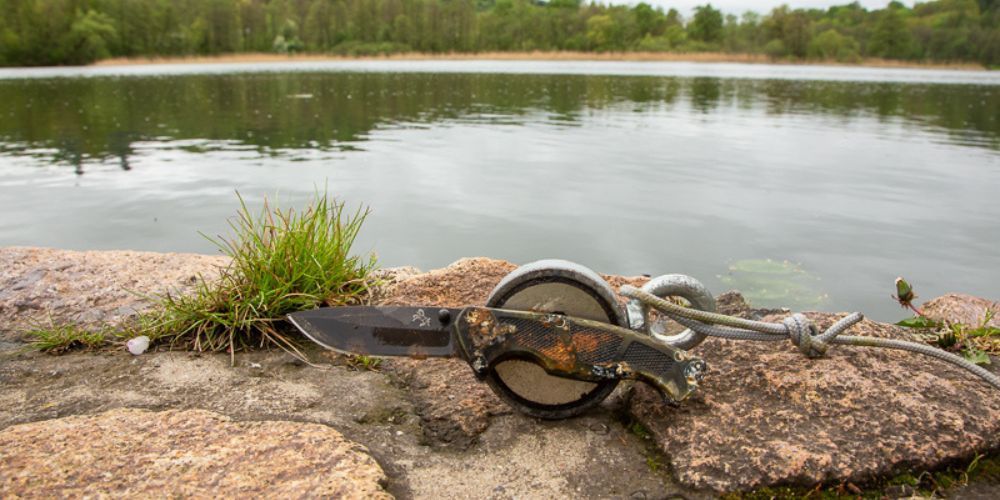
Legal Aspects of Magnet Fishing
Magnet fishing is a captivating pastime that allows enthusiasts to uncover historical artifacts, lost objects, and even bizarre finds from bodies of water. However, it's essential to be aware of the laws and regulations governing this activity since they vary widely depending on the country and local jurisdictions.
For instance, in the United States, magnet fishing is generally practiced without significant restrictions. However, each state has its own set of rules when it comes to removing historical artifacts from state waters. In some cases, a permit may be required for certain areas.
In the UK, where magnet fishing has gained popularity, there are more stringent rules in place. The Canal & River Trust in England and Wales specifically prohibits magnet fishing on most of the canals it owns, with potential violations leading to fines. This exemplifies the importance of understanding the specific regulations in your area to avoid legal repercussions.
Similarly, in Germany, individuals engaging in magnet fishing may need to obtain a permit to ensure safety due to the presence of unexploded wartime ordnance in certain areas. These regulations are crucial for preventing accidents and protecting both magnet fishers and the general public.
It's important for enthusiasts to recognize that magnet fishing can impact the environment and cultural heritage. Therefore, adhering to local laws and regulations is not only a legal requirement but also demonstrates responsible conduct as a hobbyist.
Before embarking on a magnet fishing adventure, it's imperative to educate yourself about the specific laws and regulations in your area. Taking the time to understand and comply with these legal aspects will help ensure a positive and lawful experience while enjoying this unique hobby.
Understanding the legal aspects of magnet fishing is paramount for ensuring an enjoyable and responsible experience. By respecting these regulations, enthusiasts can contribute to preserving our cultural heritage while indulging in this fascinating hobby.
What is the history of magnet fishing?
Magnet fishing dates back to the mid-20th century when strong magnets became widely available. Initially, it was a niche activity, mostly among treasure hunters and enthusiasts who used magnets to search for lost metal objects in rivers, lakes, and other bodies of water. Over time, as the hobby grew in popularity, especially with the rise of social media, more people began to share their finds and experiences online. Today, magnet fishing is enjoyed by thousands of people worldwide, who are drawn to the combination of treasure hunting, environmental cleanup, and outdoor adventure.
How did magnet fishing become popular?
Magnet fishing gained widespread popularity in the early 2000s, driven largely by the rise of social media platforms like YouTube and Instagram. Enthusiasts began sharing videos and photos of their finds, sparking interest in the activity. The appeal of magnet fishing lies in its simplicity, accessibility, and the excitement of uncovering hidden treasures beneath the water’s surface. Additionally, the hobby has attracted attention due to its environmental benefits, as participants often remove harmful metal debris from waterways, contributing to cleaner environments.
What are some significant milestones in the evolution of magnet fishing?
One of the significant milestones in magnet fishing was the development and availability of stronger neodymium magnets in the 1990s, which greatly enhanced the effectiveness of the hobby. Another milestone was the formation of online communities and forums where magnet fishing enthusiasts could share tips, tricks, and stories, further fueling the hobby’s growth. In recent years, there have been organized magnet fishing events and challenges, as well as partnerships with environmental organizations to promote waterway cleanup, marking a new chapter in the hobby’s evolution.
Author: Will Flaiz


